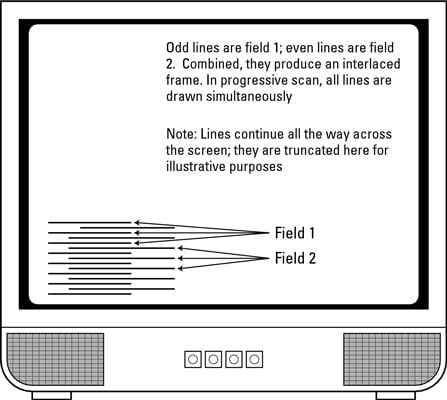Video displays use one of two scanning methods to draw the picture on the TV screen: interlaced and progressive. All HDTVs are progressive-scan displays — so even if the signal being sent to the HDTV is interlaced, the HDTV will convert it to progressive scan for display on the screen.
Here's what you need to know when comparing the two scanning methods:
Interlaced scan: Traditional TV systems (such as NTSC, the standard TV system in the United States) use an interlaced scan, where half the picture appears on the screen at a time. The other half of the picture follows an instant later (1/60th of a second, to be precise). The interlaced system relies on the fact that your eyes can’t detect this procedure in action — at least not explicitly.
Progressive scan: In a progressive-scan system, the entire picture is painted at once, which greatly reduces the flickering that people notice when watching TV. Progressive scan is available throughout a range of TV types.
You should look for a display with progressive scan if it fits into your budget, because the picture appears much smoother and more like a film. (You can get direct-view progressive-scan TVs for under $500 these days.)


